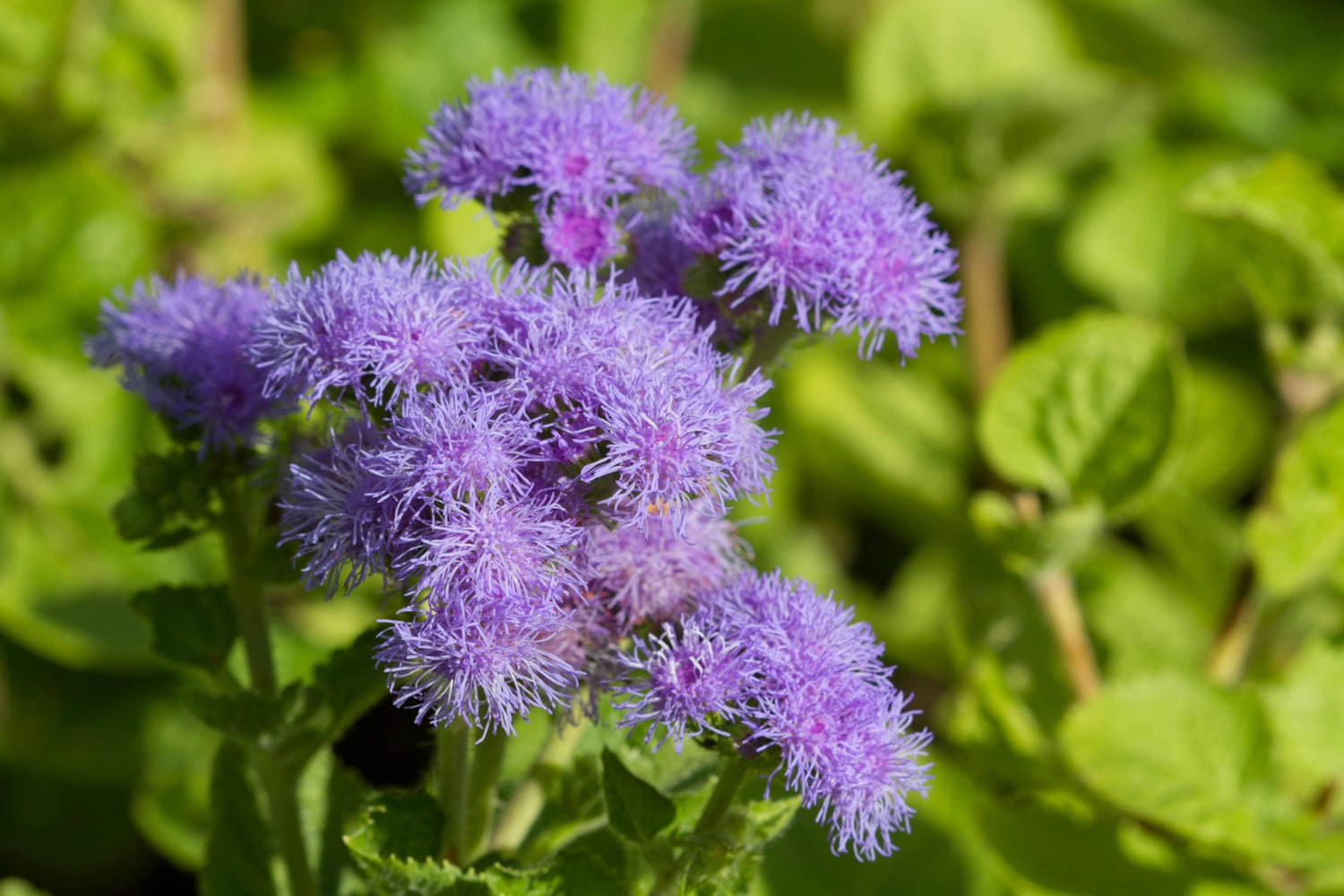Ageratum is an ornamental plant recognized for its fluffy flower clusters in shades of blue, purple, pink, and white. It is commonly found in flowerbeds, urban landscaping, balcony containers, and decorative pots thanks to its long blooming period and compact shape. Despite its small size, ageratum has many unique features that make it a valuable addition to any garden. This plant is appreciated not only for its beauty but also for its resilience and ease of cultivation. Below are some fascinating and lesser-known facts about ageratum that you may not have heard before.
- The name ageratum comes from the Greek word meaning non-aging, which refers to the flowers’ ability to retain their vibrant color for a long time. Even after being cut, the blooms keep their color and shape for several days. This makes ageratum a popular choice in floral arrangements.
- Ageratum belongs to the Asteraceae family and includes over 60 species. The most well-known is Ageratum houstonianum, also known as Mexican ageratum, widely used in ornamental horticulture. Its native habitat is Central America.
- One of the plant’s most attractive qualities is its long blooming season, which lasts from late spring until the first frosts. This trait makes ageratum especially valuable in city landscapes and home gardens. It can bloom continuously for up to five months.
- Ageratum is heat-tolerant and does not require frequent watering. It performs well in well-drained soil, even during dry periods. This makes it an excellent choice for gardens in warmer climates.
- There are different varieties of ageratum, ranging from low-growing dwarf types to medium-sized bushy forms. This versatility allows gardeners to create multi-level plantings. It works well in borders, as front-of-bed fillers, and in mixed plantings.
- The most common flower colors include blue, purple, pink, and white. Blue varieties are the most traditional and recognizable. These shades blend easily with both vibrant and pastel-colored plants.
- Despite their small size, ageratums emit a noticeable scent that attracts bees and butterflies. This makes them useful not only for decoration but also for supporting pollination in the garden. They are sometimes planted near vegetables to enhance biodiversity.
- In some countries, ageratum is considered mildly toxic to pets if ingested in large quantities. Fresh leaves can cause digestive discomfort in animals. For this reason, caution is advised when planting ageratum in areas with free-roaming pets.
- Ageratum is usually grown from seedlings because its seeds are tiny and slow to germinate directly in open soil. Sowing is done in March or April, and seedlings are transplanted outdoors after the danger of frost has passed. This ensures early and abundant blooming.
- Thanks to its compact form, ageratum is ideal for pots, containers, and balcony boxes. It is often used to decorate terraces, patios, and urban green spaces. It responds well to pruning and quickly regrows its shape.
- Ageratum has been known in European horticulture since the 19th century, when it was first cultivated in greenhouses. Eventually, it became popular in outdoor plantings and is now a standard feature in both private and public gardens. Many modern varieties have been bred to suit different climate zones.
- In some folk traditions, ageratum symbolizes youth and vitality due to its long-lasting beauty. It is sometimes called the flower that never ages. This symbolism makes it a popular choice in celebratory bouquets and gift arrangements.
- Modern breeding has produced ageratum varieties with dense flower heads that resemble small cushions. These are perfect for edging pathways and filling low flowerbeds. They are often used in public landscaping projects because of their neat and uniform appearance.
- Ageratum is not only decorative but can also serve as a natural pest repellent. Its scent deters aphids and other harmful insects, making it useful when planted among vegetables. This allows gardeners to reduce the use of chemical pesticides.
Ageratum is more than just a charming flower—it is a practical and attractive plant for gardeners of all experience levels. These interesting facts show how versatile and beneficial even a small flower can be. You may not have known that ageratum contributes not only to the beauty of your garden but also to its ecological balance. With its easy care and prolonged blooming, ageratum rightfully earns its place in gardens around the world.





